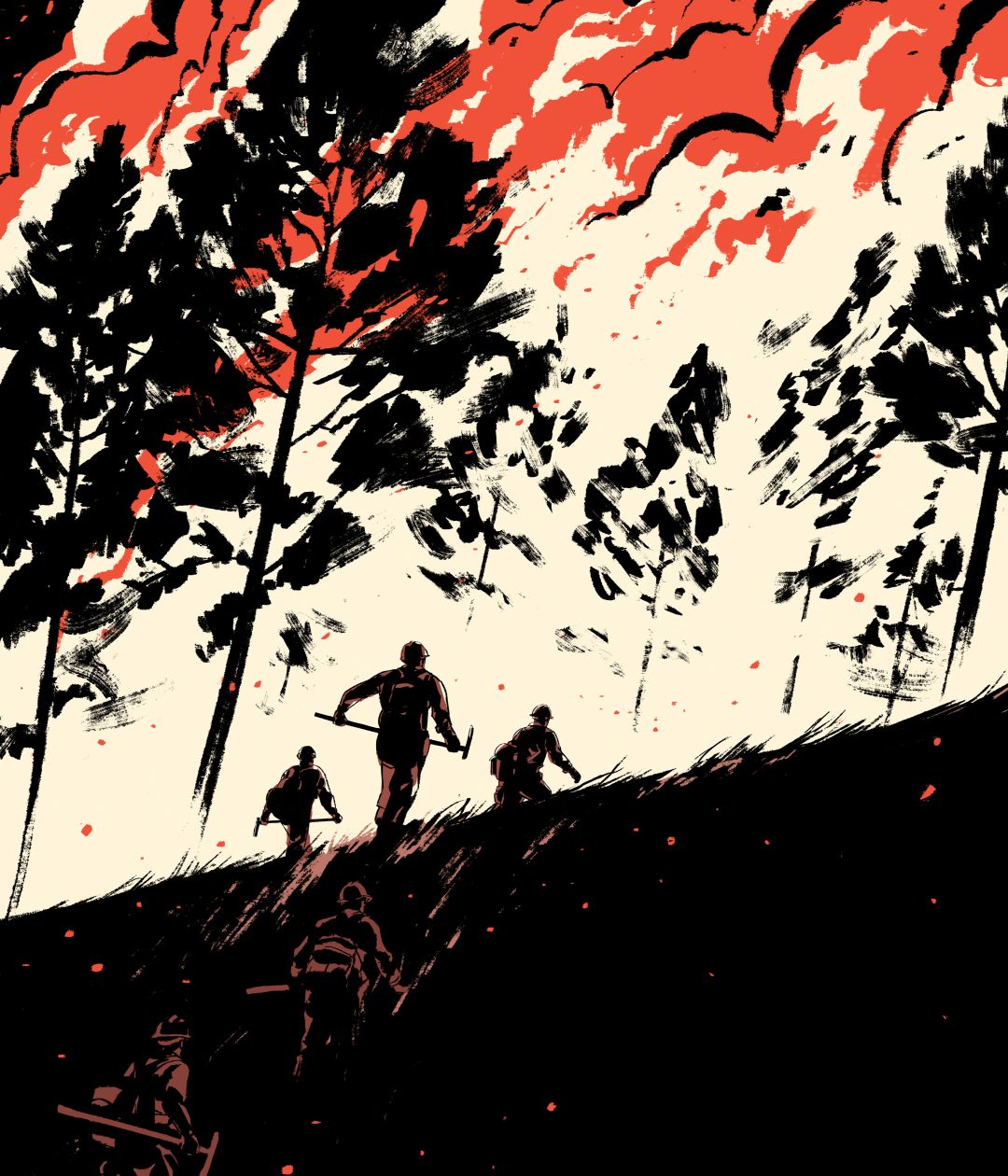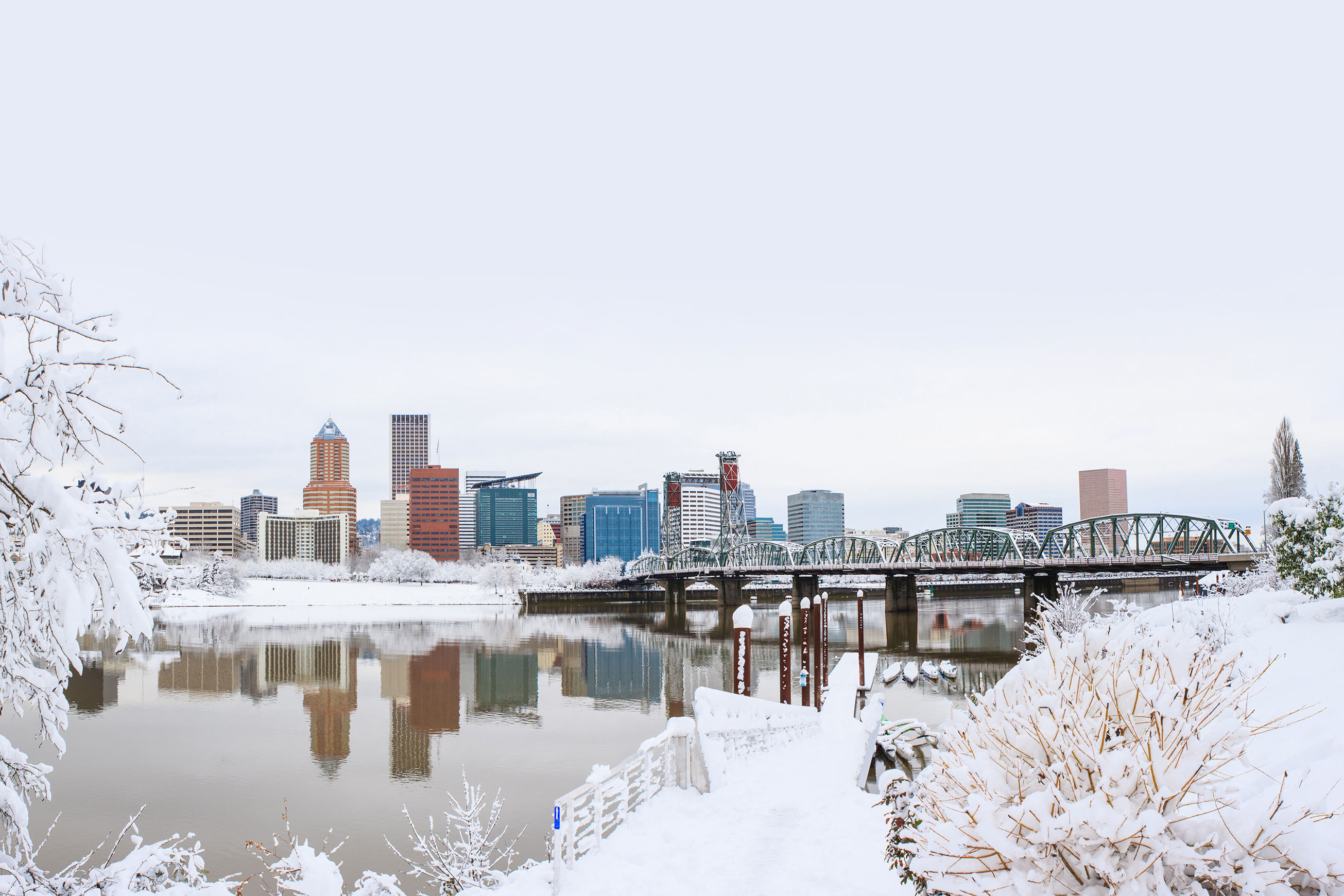When the Gorge Burned, Oregon Search & Rescue Volunteers Scrambled

Image: Patrick Leger
At 5:22 p.m. on September 2, 62 phones in the Hood River Valley buzzed. It was the 36th day in 2017 on which members of the Crag Rats mountain rescue team received alerts meaning someone, somewhere around Mount Hood, needed saving. Even so, the text messages sent adrenaline spiking. Fire in Eagle Creek. Trapped hikers. Need all available.
I’ve been a member of the Crag Rats, an all-volunteer search and rescue team, since 2000.
We know Eagle Creek. We devote about one third of our 50 or so annual days in the field to that popular Gorge destination: steep, rocky, packed with hikers. But now, a fire? Sixteen rescue mountaineers quickly mobilized. I thought: we’re not prepared for fire.
The Eagle Creek fire was started around 4 p.m. that afternoon, reportedly by teenagers igniting fireworks. The cliff-side trail runs through thickly treed terrain, the landscape that yields the Gorge’s spectacular waterfalls. As many as 150 people were thought to be trapped—an exact count was impossible—as the fire blockaded the trail a mile and a half from the trailhead parking lot off of Interstate 84. The hikers were instructed via cell phone to head uphill, away from the fire, toward Wahtum Lake—14 miles away. By dark, a lone Forest Service ranger shepherded the group to Tunnel Falls, where they hunkered for the night. Many wore summer attire—flip-flops, T-shirts, swimsuits—for a planned two-mile afternoon junket to Punch Bowl Falls. The youngest was 3; the oldest, a septuagenarian.
At 8 p.m., my post at incident command at Eagle Creek Fish Hatchery felt like being downwind of a campfire. Acrid smoke encapsulated a parking lot lit by flames flickering behind Douglas firs. Two days later the fire would travel 13 miles in 16 hours, and would eventually grow to more than 48,000 acres and spark spot fires across the Columbia River. In the following week, 1,000 personnel would battle a blaze that choked Portland with smoke and ash and elicited a wave of grief and anger across the Northwest.
But that night, one mission was paramount: saving trapped hikers. Despite the pungent air and dancing flames, three Crag Rats bolted up Ruckel Ridge to fetch three hikers, who were eventually airlifted to safety before the team could reach them. A second crew drove an hour to Wahtum Lake, and departed at midnight with three Forest Service firefighters down Indian Springs Trail, toward the stranded group. They skirted the Indian Creek Fire, burning since July 4, and eventually found 144 hikers at Tunnel Falls. By dawn, they began the long hike out to Wahtum. Another dozen Crag Rats brought in water and swept the trail. By early afternoon, all safe: Mission complete. Stand down.
This was no routine mission. But then, none are. We have provided search and rescue services to Hood River County and its surrounding area since 1926. Often, like this one, the tasks at hand are risky. Especially when we climb into darkness, dangerous terrain, and wild weather.
We are volunteers. We don’t charge people we rescue. I’m a doctor, but our members come from varied backgrounds: orchardists, carpenters, ski patrollers, farmers, schoolteachers, lawyers, and Forest Service rangers. We buy most of our own gear; fundraising events, donations, and, to a large extent, the county sheriff’s office defray other costs. We serve to help people, and for the love of the high country. And we’re busy: Hood River County sees about one tenth of Oregon’s 1,000 annual SAR missions, in some of our most rugged terrain.
We admire all of our first-responder colleagues—fire, law enforcement, EMS, forest rangers. But when people are lost or injured in the remote and difficult wilderness enjoyed by millions in Portland’s backyard, the Crag Rats go get them—more frequently, over the past few years, as visits to the Gorge and Mount Hood surge.
We got the Eagle Creek hikers out, and everyone following the high-profile rescue breathed a collective sigh of relief. Three days later, 62 phones buzzed again. Injured hiker, Timberline Trail. Another team of five Crag Rats assembled, coordinated with a sheriff’s deputy, and headed to Eden Park at 5,500 feet on Mount Hood, through silver spires and snags of the Gnarl Ridge Fire of 2008, into the smoke again.




